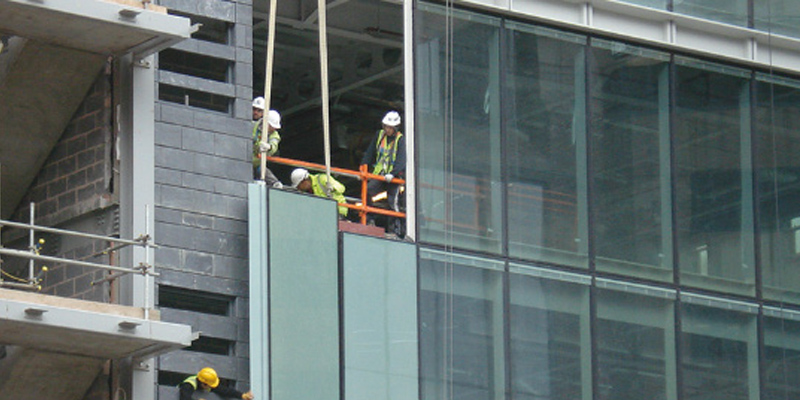Downloads
DOI:
https://doi.org/10.7480/jfde.2018.2.2067Keywords:
Modular end effector, Cable robot, Construction roboticsAbstract
The installation of façade enclosures is a manual, dangerous, and time-consuming construction task. However, thanks to the capability of automated systems, the application of automation in construction is increasing, and therefore, manual work and risky situations can be avoided. Despite this, only a few robotic systems are capable of spanning such a vast work space, i.e. the façade of a building. Among these systems is the cable driven parallel robot (CDPR). Furthermore, the CDPR could carry heavy loads such as unitised curtain wall modules (CWM). Nevertheless, the tools and devices required for installing the CWM need to be innovated. Firstly, in order to cover that research gap, the current manual procedure was analysed in detail. After that, the development team evaluated several options for performing the tasks. Finally, an optimal solution was chosen: the so-called modular end-effector (MEE). The MEE comprises several tools in order to achieve various tasks. Mainly, these tasks are: drilling the concrete slab, bracket installation, and CWM handling and positioning. In addition to the aforementioned tasks, the MEE should accurately fix all elements with a desired tolerance less than 1 mm. Meanwhile, the MEE should compensate for the perturbation movement due to external forces such as wind that affect the system. As part of the study, a detailed workflow for the automated installation of CWMs was elaborated. The drilling step of the workflow was tested and the result is presented in this paper.
How to Cite
Published
Issue
Section
License
Copyright (c) 2018 Meysam Taghavi, Homero Heredia, Kepa Iturralde, Håvard Halvorsen, Thomas Bock

This work is licensed under a Creative Commons Attribution 4.0 International License.
Authors or their institutions retain copyright to their publications without restrictions.
References
Bock, T. (2015). Construction robotics enabling innovative disruption and social supportability. International Symposium on Automation and Robotics in Construction (ISARC), 32, pp. 1-11. Finland.
Bock, T., & Linner, T. (2016). Construction Robots, Elementary Technologies and Single-Task Construction Robots, Cambridge handbooks on construction robotics. New York: Cambridge university press.
Cinkelj, J., Kamnik, R., Cepon, P., Mihelj, M., & Munih, M. (2010). Closed-loop control of hydraulic telescopic handler. Journal of Automation in Construction, 19(07), 954-963.
EU. (2017, 01 12). EU CALL, ICT-25-2016-2017. Retrieved from Advanced robot capabilities research and take-up: http://cordis.europa.eu/programme/rcn/700616_en.html
Falk, J. H., Augustinson, D. F., & Brunkeberg Systems Ab. (2014). USA Patent No. US8695308.
Gray, C., & Hughes, W. (2001). building design management. butterworth: oxford.
H., Y. S. (2007). Development of the curtain wall installation robot: Performance and efficiency tests at a construction site. Autonomous Robots, 281--291.
Hastak, M. (1998). Advanced automation or conventional construction process. Journal of Automation in Construction, 7(4), 299-314.
HEPHAESTUS. (2018, 01 13). Retrieved from About the project: http://www.hephaestus-project.eu/
Moreira, E., Pinto, A. M., Costa, P. J., Moreira, A. P., Veiga, G., Lima, J., . . . Costa, P. G. (2015). Cable Robot for Non-Standard Architecture and Construction: A Dynamic Positioning System. International Conference on Industrial Technology (ICIT) (pp. 3184-3189). Seville: IEEE.
nLink. (2018, 01 19). Retrieved from The ceiling drilling robot: www.nlink.no
Vähä, P., Heikkil, T., Kilpelinen, P., Jrviluoma, M., & Gambao, E. (2013). Extending automation of building construction survey on potential sensor technologies and robotic applications. Journal of Automation in Construction, 36(0), 168-178.
Yu, S. N., Lee, S. Y., Han, C. S., Lee, K. Y., & Lee, S. H. (2007). Development of the curtain wall installation robot: Performance and efficiency tests at a construction site. Journal of Autonomous Robots, 22(3), 281-291.
